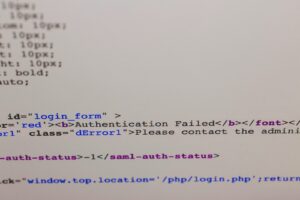The Critical Role of Secure Anonymization Key Management in IoT Security
Understanding the Importance of Anonymization in IoT Data Management
Secure Anonymization Key Management in IoT is essential because these keys are the foundation upon which data privacy is built. If these keys are compromised, unauthorized access to sensitive data becomes possible, defeating the purpose of anonymization. In IoT environments, where devices are often distributed across vast and varied networks, the risk of key exposure is heightened. This makes it imperative for organizations to implement robust key management practices that can effectively safeguard against unauthorized access and ensure the integrity of anonymized data.
The significance of anonymization in IoT goes beyond just privacy concerns. In many cases, regulatory frameworks require organizations to anonymize data to comply with data protection laws, particularly when handling personal or sensitive information. Failure to secure anonymization keys not only poses a risk to data privacy but can also result in legal and financial repercussions for organizations. Therefore, understanding the intricacies of anonymization key management is not just a technical necessity but a strategic imperative for businesses operating in the modern digital landscape.
Best Practices for Secure Anonymization Key Management
To effectively prevent unauthorized access in IoT environments, organizations must adopt best practices for Secure Anonymization Key Management in IoT. One of the foundational practices is the use of strong cryptographic algorithms to generate and store anonymization keys. Cryptographic algorithms ensure that keys are robust enough to resist attempts at unauthorized decryption. Additionally, organizations should implement a key rotation policy, where keys are periodically changed to minimize the risk of exposure over time. Regular rotation makes it significantly more difficult for malicious actors to gain access to keys and decrypt anonymized data.
Another crucial practice is the segregation of duties related to key management. By ensuring that different individuals or teams are responsible for key generation, storage, and usage, organizations can reduce the risk of internal threats. This segregation also helps in auditing and accountability, as it becomes easier to track who has accessed or modified keys at any given time. In IoT environments, where devices are often remotely managed, the use of secure key distribution protocols is also essential. These protocols ensure that keys are transmitted between devices and systems in a secure manner, preventing interception or unauthorized access during transmission.
Furthermore, organizations should consider implementing hardware security modules (HSMs) for key storage. HSMs are specialized devices designed to protect cryptographic keys from being accessed by unauthorized users. They provide a high level of security by storing keys in a tamper-resistant environment, ensuring that even if a device is compromised, the keys remain secure. In the context of IoT, where devices are often deployed in diverse and sometimes insecure locations, the use of HSMs can provide an additional layer of protection against physical and cyber threats.
Enhancing IoT Security Through Comprehensive Key Management Strategies
The Challenges of Key Management in Distributed IoT Networks
Managing anonymization keys in distributed IoT networks presents unique challenges that require specialized strategies to address. One of the primary challenges is the sheer scale and complexity of IoT networks, which often consist of thousands or even millions of interconnected devices. Each of these devices may generate, store, or transmit anonymization keys, creating multiple points of potential vulnerability. Ensuring that all these devices adhere to consistent key management practices is a daunting task that requires careful planning and execution.
Another challenge is the diverse nature of IoT devices, which can vary significantly in terms of their processing power, storage capacity, and security features. Some devices may have limited capabilities, making it difficult to implement advanced key management techniques. In such cases, organizations need to find a balance between security and functionality, ensuring that even the most resource-constrained devices can securely manage anonymization keys without compromising overall network security.
To overcome these challenges, organizations should adopt a centralized key management system that can provide oversight and control across the entire IoT network. A centralized system allows for consistent enforcement of key management policies, real-time monitoring of key usage, and rapid response to potential security incidents. Additionally, centralized systems can automate many aspects of key management, such as key rotation and revocation, reducing the likelihood of human error and ensuring that best practices are consistently applied across the network.
The Role of Automation and AI in Key Management
Automation and artificial intelligence (AI) can play a significant role in enhancing Secure Anonymization Key Management in IoT environments. Automation tools can streamline key management processes, reducing the time and effort required to manage keys across large and complex IoT networks. For example, automated key rotation can be set to occur at predefined intervals, ensuring that keys are regularly updated without the need for manual intervention. Similarly, automated key distribution can ensure that keys are securely transmitted to devices as needed, minimizing the risk of interception or unauthorized access.
AI can further enhance key management by providing advanced threat detection and response capabilities. Machine learning algorithms can analyze patterns of key usage across the network, identifying anomalies that may indicate potential security threats. For example, if a key is being accessed at an unusual time or from an unexpected location, AI systems can flag this activity for further investigation. By integrating AI with key management systems, organizations can proactively detect and respond to threats before they result in unauthorized access or data breaches.
Moreover, AI can assist in optimizing key management practices by continuously learning from past incidents and adjusting security protocols accordingly. This adaptive approach ensures that key management strategies evolve in response to emerging threats, keeping the IoT network secure in an ever-changing threat landscape. In regions like Dubai and Riyadh, where the adoption of IoT technologies is rapidly accelerating, leveraging AI for key management can provide a competitive advantage by enhancing security while minimizing operational complexity.
Implementing a Comprehensive Key Management Strategy
To effectively secure anonymization keys in IoT environments, organizations must implement a comprehensive key management strategy that encompasses all aspects of the key lifecycle. This strategy should begin with a thorough assessment of the organization’s IoT network, identifying potential vulnerabilities and areas where key management practices need to be strengthened. Based on this assessment, organizations can develop a key management policy that outlines specific procedures for key generation, storage, rotation, distribution, and revocation.
Training and awareness programs are also essential components of a comprehensive key management strategy. All stakeholders, including IT staff, business leaders, and end-users, should be educated on the importance of key management and their role in maintaining the security of anonymization keys. Regular training sessions can help reinforce best practices and ensure that all stakeholders are aware of the latest threats and how to mitigate them.
Finally, organizations should regularly review and update their key management strategy to ensure that it remains effective in the face of evolving threats. This may involve conducting periodic security audits, testing key management protocols, and staying informed about the latest developments in cryptography and IoT security. By continuously refining their key management strategy, organizations can ensure that their IoT environments remain secure, protecting sensitive data from unauthorized access and ensuring compliance with regulatory requirements.
—
#IoTSecurity #KeyManagement #DataPrivacy #Cybersecurity #IoTEnvironments #BusinessTechnology #AIinSecurity #NetworkSecurity #BestPractices #ModernTechnology













